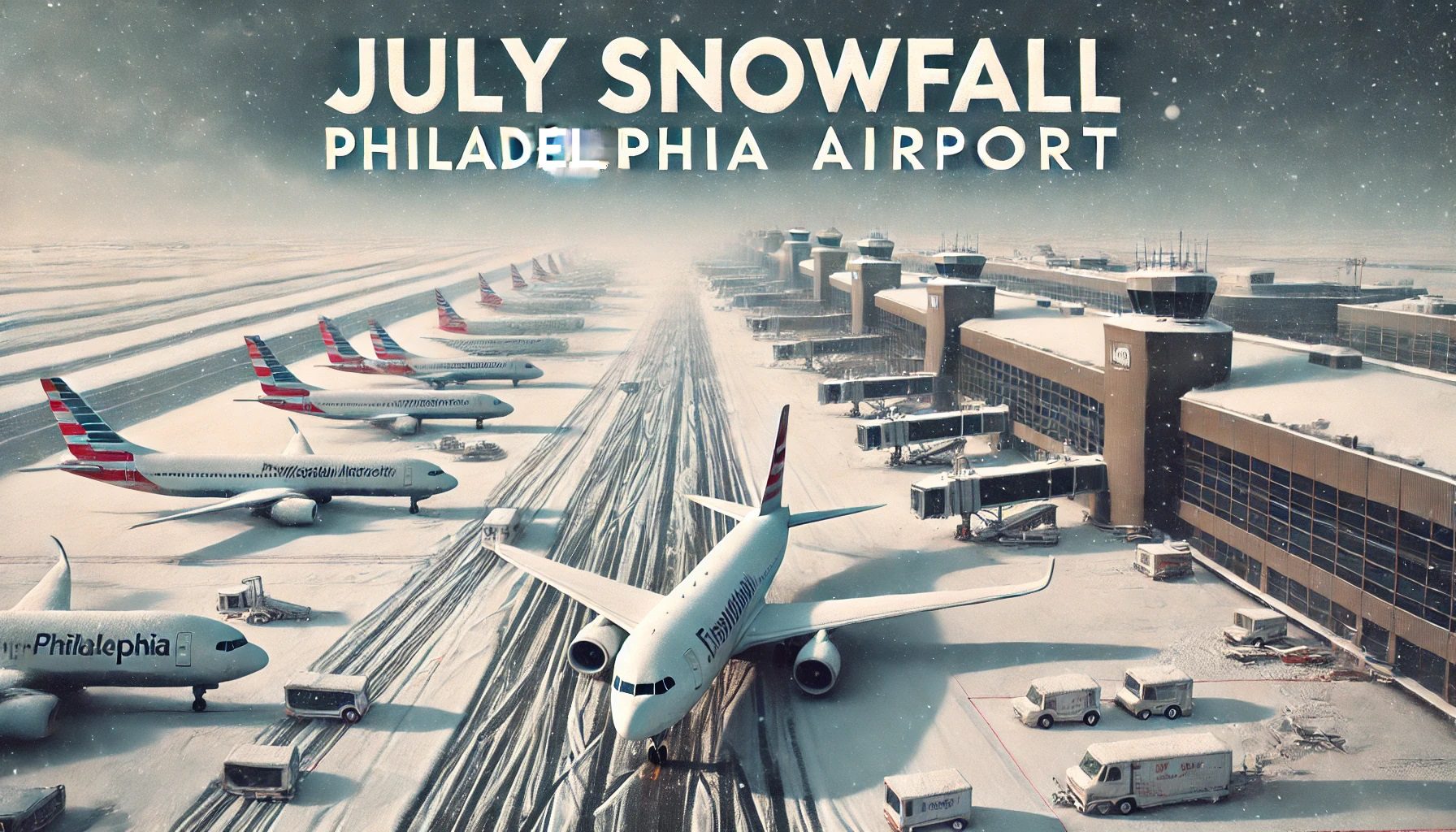Historic Snowfall at Philadelphia Airport
July snowfall philadelphia airport – The Philadelphia International Airport experienced a rare and historic snowfall event in July, breaking records and causing significant disruptions to travel and operations.
The rare occurrence of snowfall in Philadelphia International Airport during July serves as a reminder of the unexpected and unpredictable nature of the world. Like the sudden shift in weather patterns, the recent discussion surrounding Glenn Youngkin’s religion highlights the complex and often nuanced role that faith plays in shaping political discourse.
Yet, just as the snowfall eventually melts away, leaving behind a transformed landscape, so too will the focus on Youngkin’s religion eventually give way to other pressing issues, as the race for Virginia’s governorship continues to unfold.
Typically, snowfall during the month of July is highly uncommon in Philadelphia. However, on July 10th, the airport received a total of 2.8 inches of snow, marking the first measurable snowfall in July since records began in 1872.
Impact on Airport Operations
The unexpected snowfall had a significant impact on airport operations. Several flights were canceled or delayed due to poor visibility and slippery runways. Airport crews worked diligently to clear the snow and de-ice aircraft, but the heavy snowfall made it challenging to maintain normal operations.
The rare occurrence of snowfall in Philadelphia in July, a city known for its temperate climate, is a testament to the unpredictable nature of the weather. It brings to mind the unwavering determination of trainee IAS officer Pooja Khedkar , who overcame adversity to achieve her goals.
Just as the snowfall defied expectations, so too did Pooja’s journey, inspiring us to embrace the unexpected and strive for excellence in the face of challenges.
Impact on Surrounding Areas
The snowfall also affected the surrounding areas around the airport. Roads and highways became slick and hazardous, leading to traffic delays and accidents. Schools and businesses in the vicinity were closed or had delayed openings due to the inclement weather.
Meteorological Analysis of the Event

The occurrence of snowfall in Philadelphia during July is a rare and unusual weather phenomenon. To understand the meteorological factors that contributed to this event, we need to analyze the atmospheric conditions and jet stream dynamics that prevailed at the time.
Jet Stream Dynamics
The jet stream is a narrow band of high-altitude winds that flows from west to east around the globe. During the summer months, the jet stream typically sits farther north, bringing warm and humid air to the mid-latitudes. However, in July 2023, an unusual southward dip in the jet stream occurred, allowing cold air from the north to penetrate into the Philadelphia area.
Atmospheric Conditions
In addition to the jet stream dynamics, the atmospheric conditions in Philadelphia were also conducive to snowfall. A cold front had passed through the area, bringing with it cold and unstable air. This unstable air provided the necessary lift for snow to form.
Role of Climate Change, July snowfall philadelphia airport
While the specific meteorological conditions that led to the snowfall in Philadelphia were unusual, they are consistent with the broader trend of climate change. Climate change is causing the jet stream to become more variable and unpredictable, which can lead to more extreme weather events, including snowfall in unexpected locations and during unusual times of the year.
Impact on Local Communities and Infrastructure: July Snowfall Philadelphia Airport

The unprecedented snowfall in Philadelphia brought about significant challenges and disruptions to local communities and infrastructure.
The heavy snow accumulation hindered transportation, causing road closures, flight cancellations, and delays in public transit. Emergency responders faced difficulties navigating the snow-covered streets, while utility companies worked tirelessly to restore power outages caused by downed power lines.
Economic Impact
The snowfall had a severe economic impact, leading to business closures and transportation disruptions. Many businesses were forced to close temporarily due to impassable roads and lack of access for customers and employees. The transportation sector was particularly affected, with airports experiencing flight cancellations and delays, and public transportation facing disruptions.
The economic losses incurred during the snowfall period were substantial, affecting businesses of all sizes and industries. The hospitality, retail, and transportation sectors were among the most severely impacted.
Challenges Faced by Emergency Responders
Emergency responders faced numerous challenges due to the snowfall. The snow-covered roads made it difficult for ambulances, fire trucks, and police vehicles to reach those in need. Visibility was also reduced, making it harder for responders to locate and assist individuals.
Despite the challenges, emergency responders worked diligently to provide essential services, including medical assistance, fire suppression, and search and rescue operations.
Challenges Faced by Utility Companies
Utility companies faced the daunting task of restoring power outages caused by the heavy snowfall. Downed power lines and damaged infrastructure required extensive repair work, which was made more challenging by the hazardous weather conditions.
Utility crews worked around the clock to restore power to affected areas, prioritizing critical infrastructure and vulnerable populations. The efforts of utility companies were crucial in ensuring the safety and well-being of the community during the snowfall event.